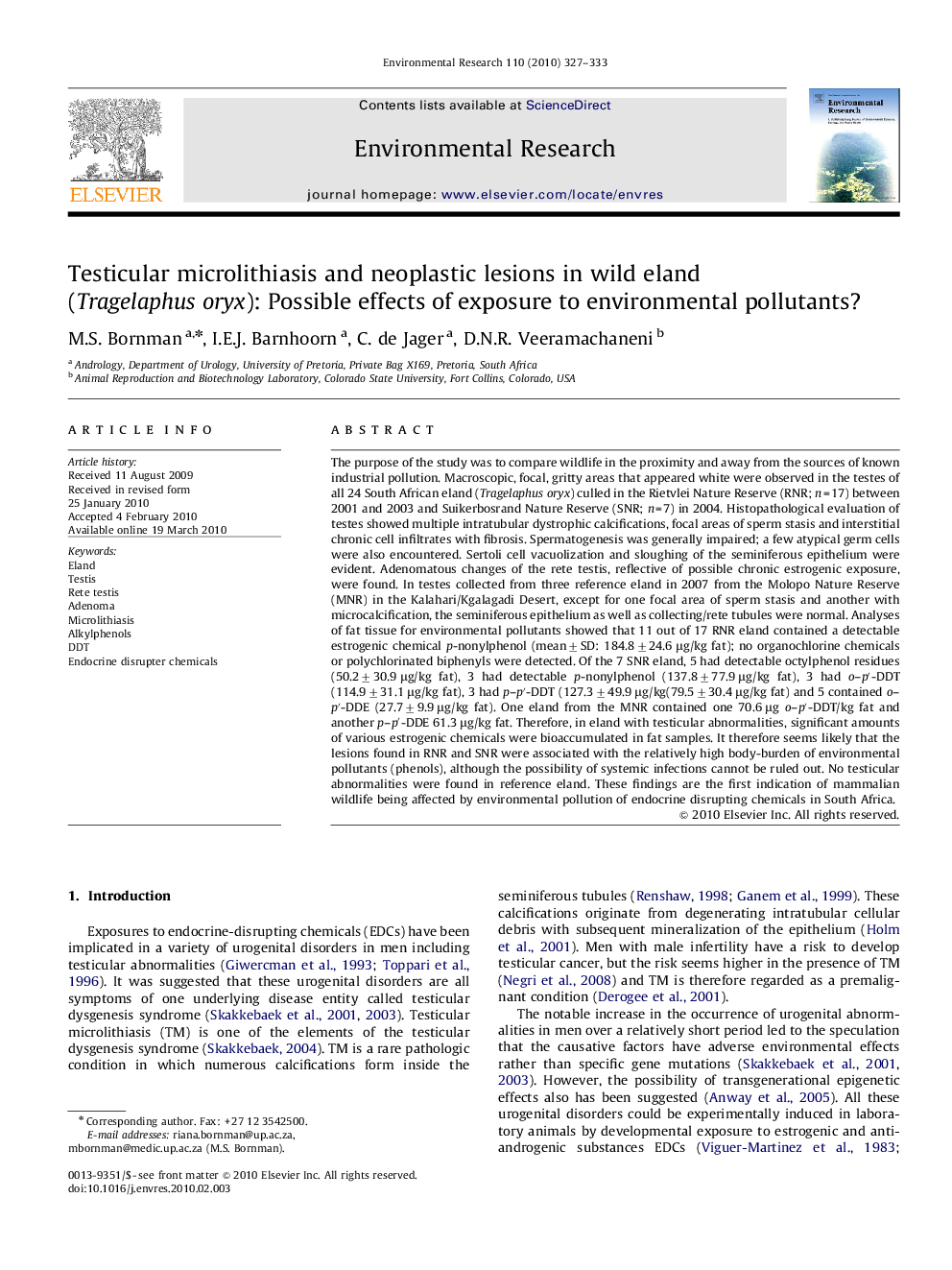| کد مقاله | کد نشریه | سال انتشار | مقاله انگلیسی | نسخه تمام متن |
|---|---|---|---|---|
| 4470311 | 1314419 | 2010 | 7 صفحه PDF | دانلود رایگان |

The purpose of the study was to compare wildlife in the proximity and away from the sources of known industrial pollution. Macroscopic, focal, gritty areas that appeared white were observed in the testes of all 24 South African eland (Tragelaphus oryx) culled in the Rietvlei Nature Reserve (RNR; n=17) between 2001 and 2003 and Suikerbosrand Nature Reserve (SNR; n=7) in 2004. Histopathological evaluation of testes showed multiple intratubular dystrophic calcifications, focal areas of sperm stasis and interstitial chronic cell infiltrates with fibrosis. Spermatogenesis was generally impaired; a few atypical germ cells were also encountered. Sertoli cell vacuolization and sloughing of the seminiferous epithelium were evident. Adenomatous changes of the rete testis, reflective of possible chronic estrogenic exposure, were found. In testes collected from three reference eland in 2007 from the Molopo Nature Reserve (MNR) in the Kalahari/Kgalagadi Desert, except for one focal area of sperm stasis and another with microcalcification, the seminiferous epithelium as well as collecting/rete tubules were normal. Analyses of fat tissue for environmental pollutants showed that 11 out of 17 RNR eland contained a detectable estrogenic chemical p-nonylphenol (mean±SD: 184.8±24.6 μg/kg fat); no organochlorine chemicals or polychlorinated biphenyls were detected. Of the 7 SNR eland, 5 had detectable octylphenol residues (50.2±30.9 μg/kg fat), 3 had detectable p-nonylphenol (137.8±77.9 μg/kg fat), 3 had o–p′-DDT (114.9±31.1 μg/kg fat), 3 had p–p′-DDT (127.3±49.9 μg/kg(79.5±30.4 μg/kg fat) and 5 contained o–p′-DDE (27.7±9.9 μg/kg fat). One eland from the MNR contained one 70.6 μg o–p′-DDT/kg fat and another p–p′-DDE 61.3 μg/kg fat. Therefore, in eland with testicular abnormalities, significant amounts of various estrogenic chemicals were bioaccumulated in fat samples. It therefore seems likely that the lesions found in RNR and SNR were associated with the relatively high body-burden of environmental pollutants (phenols), although the possibility of systemic infections cannot be ruled out. No testicular abnormalities were found in reference eland. These findings are the first indication of mammalian wildlife being affected by environmental pollution of endocrine disrupting chemicals in South Africa.
Journal: Environmental Research - Volume 110, Issue 4, May 2010, Pages 327–333